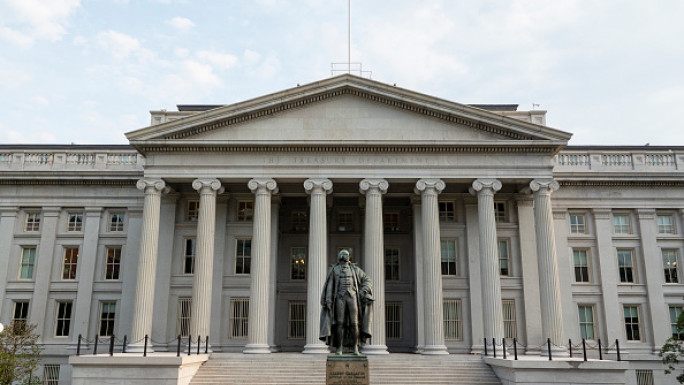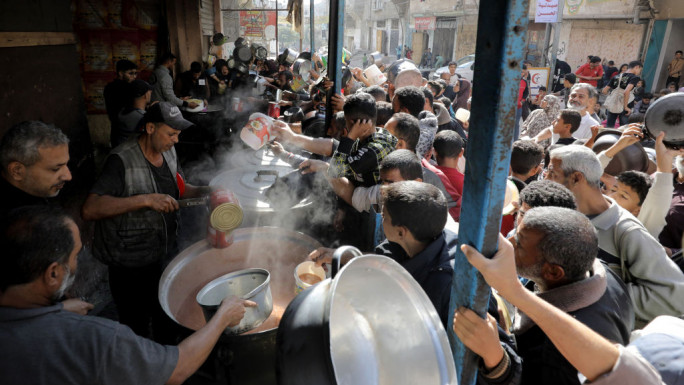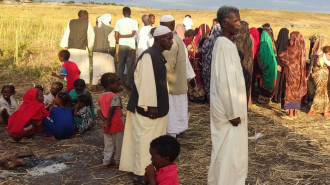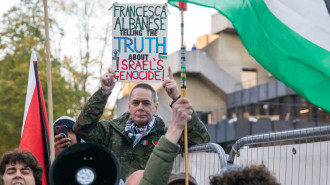
'The Other Side of Silence': Hrair Sarkissian exhibited at the Sharjah Art Foundation

The Other Side of Silence on show at the Sharjah Art Foundation in UAE presents the first mid-career survey of Damascus-born artist, Hrair Sarkissian. It recalls Sarkissian’s distinctive exploration of contested narratives and the crevices of personal and collective memories, through his unique use of documentary photography and storytelling.
Curated by Dr Omar Kholeif, Director of Collections and Senior Curator at the Sharjah Art Foundation (in partnership with Dr Theodor Ringborg and Stijn Huijts) the exhibition includes Sarkissian’s major works, spanning across 15 years, in addition to two new commissions, Last Seen (2018–2021), for the Sharjah Art Foundation, and Sweet and Sour (2022), for the Bonnefanten.
In The Other Side of Silence, we revisit early-career projects such as Unfinished (2006) and In Between (2006) which define much of Sarkissian’s later artistic choices and overall journey.
"His new works interrogate the role of memory in transcending finitude and preserving human agency and dignity"
Unfinished interrogates architectural and spatial emptiness, fetishising contemporary ruins across contemporary Western Asia. In 16 bare, human-free urbanscapes Sarkissian captures the stillness and suspended time, structures in progress, abandoned. He deconstructs maximalist, Orientalist aesthetics so far detached from the daily reality of its residents.
In Between explores the artist’s dual Armenian-Syrian identities. Investigating his heritage, Sarkissian travelled to Armenia, photographing wintry and austere landscapes. The photographs convey dissociation and question the assumed warmth of home (he would physically destroy a replica of his Syrian home in 2014).
The generational trauma caused by the Armenian genocide haunts Sarkissian and features prominently in his newest project, Sweet and Sour. With an eye to unveiling truth and an inquisitorial approach to personal archives, he undertook a journey to Anatolia, where his grandfather’s family had been massacred, to find traces of this vanished past.
Sarkissian (born 1973) grew up in Syria, where he learnt photography at his father’s studio called Dream Colour. It was the first photographic colour laboratory in the country at the time of its establishment in 1979. On how this formative experience shaped his character and passion, he recalled in an interview, “It’s where I learnt everything about photography, technical aspects, everything from photography to printing, all these skills. I also learnt about life, how to deal with adults in the shop, all these kinds of things, it was like a proper academy for me.”
He remembers this personal memory and the theme of growth in the series Father & I (2010) with photographs acting as records. Sarkissian documents the studio’s interior and juxtaposes colourful portraits of himself next to monochromatic portraits of his father taken during younger days, projected in a contact sheet-like succession. In Father & I, Sarkissian pays tribute to the teachers and mentors in our lives while seeking to preserve what is destined to be lost.
Sarkissian was 12-years-old on a school bus when he came across a public execution in Syria. This image never left him and motivated him to document other known locations where public executions for civil crimes occurred, in Aleppo, Damascus, and Latakia – Execution Squares, 2008, is now in the permanent collection of the Sharjah Art Foundation and remains one of the artist’s most recognisable works.
Sarkissian dives in the uncanny in his eerily quiet snapshots of mundane-looking squares. Taken early morning, the photographs – a macabre stage once the viewer understands their theatricality – strikes by an absence of visible bodies. Sarkissian fights against erasure, against normalising the abnormal. His still-life squares whisper to us, would you want to die this way, in this place?
"The “other side” of silence, as the name of this mid-career survey conveys, speaks to our disorientation and collective grief for places, moments, and people that are no longer"
Sarkissian’s interest in the nonhuman and the relationship between a fragile ecosystem and our societies is evident in Final Flight (2017-2019), a multimedia installation that includes stunning photographs of the Northern Bald Ibis, casts of its skulls and a bird-eye view film.
The cultural significance of the migratory bird runs deep and echoes with Syria’s displacement and migration crisis today. We find reference to Northern Bald Ibises in ancient Egypt and the animal was associated with guiding Muslim pilgrims to Mecca. Ibises were considered extinct in 1989 until they resurfaced near Palmyra over a decade later. They disappeared from view again in 2014, just before the so-called Islamic State took control of the city causing immeasurable destruction to its people and ancient sites.
Sarkissian mainly uses large-format analogue photography which provides large-scale (sometimes life-sized) cinematic windows to reimagine archaeology and conservation. “I try to engage the viewer in looking at what lies behind the image. The silence,” he said. An image is a possibility and its conceptual function, an object of continuous reinvention.
His artistic practice has also extended to other media, such as film, sculpture and, more recently sound. Deathscape (2021) is the artist’s first sound archive. It plays the sound of people excavating mass graves in Spain, from the civil war era and its aftermath. We don’t see the horror in its graphic nudity, yet this absence turns out to be more gripping as the “blind” listeners are left to imagine, visualise and confront their own revulsion.
His new works interrogate the role of memory in transcending finitude and preserving human agency and dignity.
Last Seen documents loss and grieving. Sarkissian met the families of people who suddenly disappeared, in Argentina, Bosnia, Brazil, Kosovo and Lebanon. The 50 tightly-arranged photographs capture the location where these missing people were last seen – living rooms, gardens, corridors, and other anodyne spaces which become the relics of a memory. Sarkissian does not share the specific stories and circumstances behind each disappearance, only a name and a date. This quasi-anonymity reinforces injustice and violence. Light in the composition stands as a mute witness.
Sarkissian’s attentiveness to places of mourning was previously explored in the homophone project Last Scene (2016), which explored space and loss in other ways, following the final wishes of terminally-ill patients in the Netherlands (Sarkissian studied in Amsterdam before moving to London where he now lives).
Last Scene shows the places these patients wanted to see as a “last wish,” taken exactly a year after their visit. It’s an intimate gaze, a memento mori, a reminder of desires and compassion and what we chose to value when it’s time to say goodbye.
In all these projects silence is a way to draw the viewer in, closer to the image. The “other side” of silence, as the name of this mid-career survey conveys, speaks to our disorientation and collective grief for places, moments, and people that are no longer. The invisible becomes an inventory of near-physicality, an altar to trauma and healing.
Sarkissian’s works have been acquired by the Farjam Collection, the Khalid Shoman Collection, the Mori Art Museum, Tate Museum, and more.
Farah Abdessamad is a New York City-based essayist/critic, from France and Tunisia.
Follow her on Twitter: @farahstlouis

![Hrair Sarkissian: The Other Side of Silence, 2021. Installation view: Sharjah Art Foundation, 2021. [Photo: Shanavas Jamaluddin]](/sites/default/files/styles/medium_16_9/public/2021-12/0qlft4XY.jpeg?h=6d65db73&itok=MWbnDCDE)






 Follow the Middle East's top stories in English at The New Arab on Google News
Follow the Middle East's top stories in English at The New Arab on Google News


